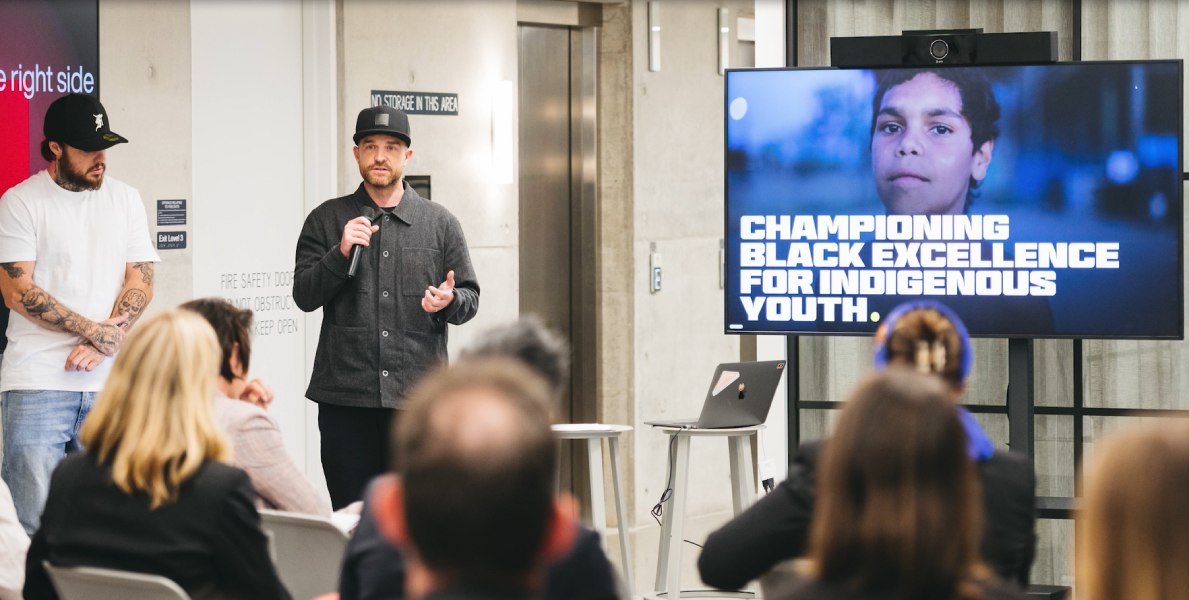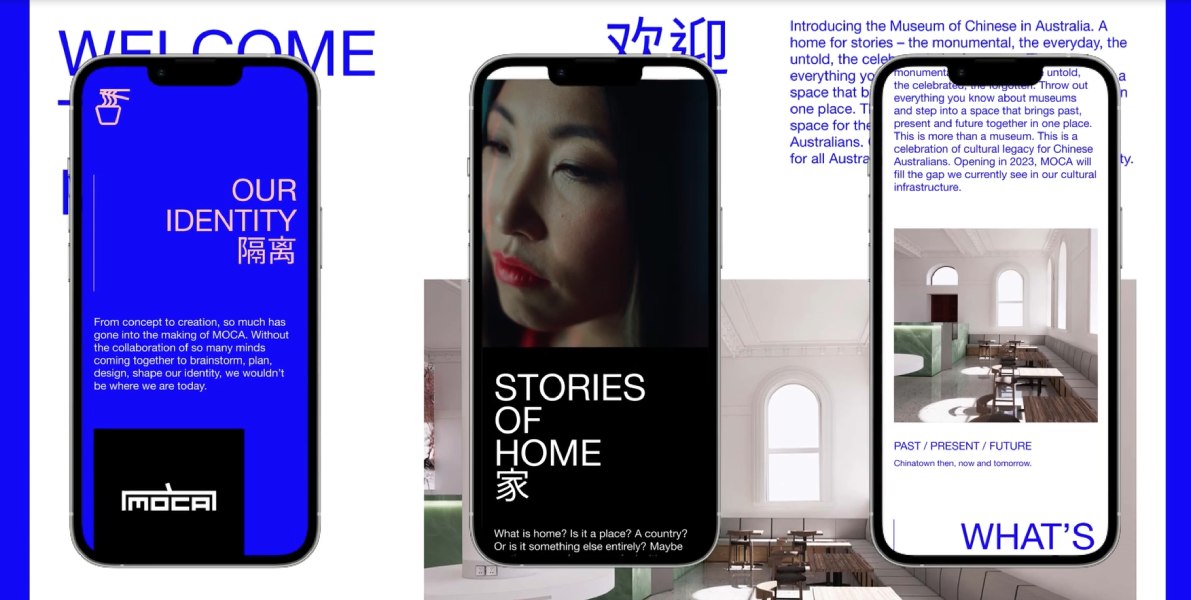“It’s important that we’re all on the right side of change and brands more than ever, because they play such a role in shaping culture and influencing behaviour,” said Claire Waring, executive creative director of R/GA Australia.
B&T is talking to Waring in R/GA’s swanky new office in Sydney’s Surry Hills ahead of its launch event. However, despite opening a brand new office space, R/GA announced that it was moving away from an “office-centric” model, allowing staff to work with its range of clients regardless of where they might be based.
While that change in approach might seem to run contrary with revealing a new office space, for R/GA, it all comes back to making sure brands are on the right side of change. And, in today’s world, that means that brands have to be more culturally sensitive and inclusive than ever before, as well as promoting responsibility and sustainability.
“I think being on the right side of change, especially for R/GA — and I buy wholeheartedly into this — is being on the side of a more human future,” said Waring.
“The lens that we put over everything that we do, particularly because we work a lot with technology, is the question ‘Is this something for humanity? Is this genuinely going to improve people’s lives or is this going to work against them?'”
According to Waring, this is far from just talk, either.
“We get asked to pitch on a lot of things and, if there is something that we’re asked to pitch on that doesn’t align with our values, then we just don’t pitch,” she explained, being careful not to mention any brands by name.
“We’re in a position to where we can choose who we’d like to work with, we’re very fortunate in that. We make sure that they’re kind humans, that it aligns with the values that we all hold and that’s important for us as a leadership team but it’s also incredibly important for the wider team as well.”
But, with a potential recession on the cards and Australians starting to feel the pinch, doing the right thing means more than just playing nicely.
“Attention to a brand and the value it provides is top of mind for consumers right now. And there is a lot more to value than affordability,” added Sean Lyons, R/GA’s global CEO.
“Brands need to develop and deliver strategies that understand consumers’ needs and values. We conducted our own research, which found customer satisfaction was highly linked to customer confidence — both in the quality of a product or service and its ability to help them achieve larger goals. If a brand can deliver on these qualities, consumers will confidently prioritize their purchasing decision.”
But, importantly, there is no one-size-fits-all rule for brands to follow — though there are common themes.
“Both a brand and an audience change everything about our approach,” said Waring.
“You really have to spend time delving into the insights to really understand the customer and understand the brand.”
Taking the time to delve into customers and the brands is something that R/GA excels at.
In its work for We are Warriors, a first-of-its-kind platform created to celebrate Blak excellence and drive positive change for Indigenous youth, Ben Miles, R/GA’s executive creator director for brand innovation, worked incredibly closely with Yuin Nation hip hop artist, producer, radio host, and We are Warriors founder, Nooky.
During the talk at R/GA’s offices, Miles and Nooky were both visibly emotional, relaying stories of racist abuse from Nooky’s childhood.
The agency also brought in diverse views from its offices around the world for its work for the Museum of Chinese in Sydney.
“Our model enables our best talent, regardless of geography, to work on client briefs and deliver these end-to-end,” said Michael Titshall, R/GA’s SVP managing director for Australia, during the office launch.
However, this diversity of thought but common humanity doesn’t simply extend to people from different countries or backgrounds.
“There’s a common thread between all generations around the right side of change,” said Waring.
“What we look for is that common thread through everybody. We’re all human, there are common needs, desires, and wants that run though every generation. Yes, there are differences in every generation but I think we are more alike than we are different.”
With that being said, Waring believes that slightly adapting messaging to appeal to different consumers does not diminish the sentiment of the overall campaign or language.
“It’s important to meet people where they are, both in channel — where they’re spending time and what they’re doing — but also in their mindset,” explained Waring.
“We would absolutely adapt and change a message so it resonates with an audience in a channel that is appropriate for them. But we’d look to push the edges of possibility of that channel, no matter what it is. Whether that is broadcast, whether it’s something that is more driven in technology, we’d absolutely love to be tailoring it.”
With Gen Z, Web3, the metaverse, and more authentic channels such as TikTok, Waring believes that brands will become more prominent in consumer’s lives. However, that availability will make brands more open to challenge and the relationship between brands and consumers more participatory.
“We’re now able to have not just a one-way or two-way conversation but a participatory relationship,” she explained.
“From the moment we started to have websites and interactivity, we started to have an ability to have more than a one-way conversation. The more we move into Web3 and the technology around it, the more we have the ability to not only reach customers but to provide value, because we can create products, services, and other items of utility that can play a genuine role in people’s lives.
“We’re moving more and more towards participation, particularly if you look at Gen Z. It’s not even about a two-way conversation for Gen Z, they want to be involved. They want to be building and shaping. They want to be in a world where brands and fans build in places like the metaverse together.
“I think how involve you let your customers be in your brand is only going to continue as the tools and the means that people have to get involved in your brand get better.”
This participation will require a readjustment for people in the marketing and creative industries.
“I think that’s terrifying for brands and for marketers, quite honestly because it means letting go of control,” she said.
“But we’re already seeing that it gets really great results if you can involve your audience. I think we’re now moving to a place where, if you want your brand to really resonate with customers, you’re going to have to let them in to help build and shape and be a part of that brand.”
Hand-in-hand with that growth in participation between brands and consumers is the rise of creators.
“I think creators are really interesting and it almost strikes me as where influencers were 10 years ago,” said Waring.
“When we first had Instagram emerge and all these people were doing amazing stuff online and they were just creating and putting it out there. I feel like we then moved to this age of a perfect influencer and now it’s so delightful to see that creators are genuinely creating things and being themselves and showing those chinks in the armour and those different interesting facets of themselves — they’re sort of having this resurgence. As a creative, it’s such a delight to see that.”
This, in Waring’s view, is fundamentally a good thing and definitely the right sort of change R/GA wants to see. Of course, it’s not without risk for brands and marketers — creators can go rogue.
“You have to be careful but then, I think it takes a bit of risk to get a big reward,” said Waring.
Doing the right thing rarely seems easy but, with its new office, working culture, and from talking to Waring and Lyons, it seems as though the agency has given itself a solid foundation to be on the right side of change.










